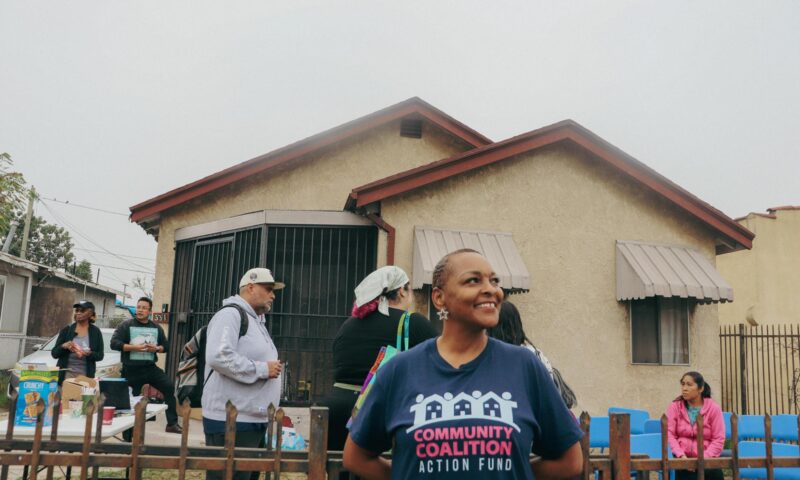In a high-profile attack on LGBTQ science research this spring, President Donald Trump decried supposedly wasteful research like $8 million for “making mice transgender.” Trump played the mice remark for laughs during a joint address to Congress on March 4.
But the $8 million in funding was not a joking matter; the federal grants supported six research efforts funded by the National Institutes of Health that focused on HIV, asthma, infertility, breast cancer and other pressing issues.
These studies are among countless medical and public health research initiatives, many benefiting LGBTQ patients, that were targeted by the administration this year — NIH terminated or delayed more than 2,400 grants, according to an analysis by the New York Times. And while it’s not known how many of the NIH cuts were LGBTQ-focused or LGBTQ-inclusive, it’s undisputed that they were driven by the fervor against diversity, equity and inclusion policies, or DEI.
Not all the administration’s cuts to research budgets are aimed at individual scientists; some target an entire university, such as at Harvard, and others take aim at once-celebrated health missions, such as ending support for the development of an HIV vaccine. Even as universities and scientists are pushing back in the courts with some notable success, medical research is in disarray.
The termination of LGBTQ-benefiting medical research comes at a time when more people are identifying as LGBTQ than ever before. Research shows LGBTQ youth are at higher risk of poor mental health such as suicidal thoughts, experiences of violence and sexually transmitted infections.
LGBTQ communities would be the prime beneficiaries of the studies involving so-called transgender mice, but the findings also had the potential to improve the health of cisgender women, according to scientists involved in the work.
“It’s funny to imagine a mouse being canceled for being trans. That’s not at all what’s happening,” said Dane Samilo of Out to Innovate, a society of LGBTQ students and professionals in science, technology, engineering and mathematics. “We’re not funding things that are frivolous. This is science that is relevant and rigorous and has potential implications.”
What Does It Mean to “Make Mice Transgender”?
The $8 million in grants from the NIH cited by Trump helped fund six research efforts that were focused on the role of hormones and hormone therapies in disease treatment and prevention.
One of the studies listed as “making mice transgender” was led by Patricia Silveyra, who is a lung disease researcher, a professor and chair of the Environmental and Occupational Health Department at Indiana University. Her focus is not transgender health, though her findings could possibly benefit trans women, among a larger pool of patients.
She is studying how asthma is affected by female hormones, which have been linked to more severe symptoms. To do this, she’s using mice that were genetically modified to share opposite sex traits. She said her findings could pave the way for a new drug for asthmatic women dealing with hormonal changes as a result of pregnancy, giving birth, taking oral contraception or while transitioning from male to female. An estimated 10% of the U.S. adult female population suffers from asthma.
“Part of what we’re trying to understand is how the hormones regulate the process that leads to asthma so that we can treat it directly,” said Silveyra, whose team has published seven papers from her multiyear research on the subject. Silveyra’s grant that Trump cited did not, in the end, get cancelled. She received a one-year, no-cost extension through next June, a status that allows scientists to continue their grant research but without any new funding.
HIV Erasure
Another project called out by the administration enabled scientists to treat mice with opposite-sex hormones to study how gender-affirming hormone therapy affects the immune system’s response to HIV vaccines, especially in transgender women, who are at a higher risk for HIV and other sexually transmitted infections. The goal was to understand the influence of sex hormones on immunological health, and inform more effective vaccine designs. Worldwide, transgender people are 13 times more likely to be HIV-positive than the general population.
Findings from the study could have benefited not only the transgender population but also cisgender women, who are more prone to autoimmune disorders and adverse effects to vaccines, and to cisgender men, who have a higher mortality rate when it comes to certain diseases such as SARS and COVID-19, according to Aria Arus-Altuz, of the Duke Human Vaccine Institute.
Arus-Altuz said the end of HIV vaccine research “hurts deeply,” acknowledging that while there are treatments that extend patients’ lives, “There are communities around the world where lifelong treatments are neither affordable nor accessible. … A preventative vaccine is key to ending this epidemic once and for all.”
Beyond Mice
Numerous other LGBTQ-inclusive medical studies, not involving mice, have been targeted in the so-called war on woke and waste in science. On March 7, United States Department of Agriculture Secretary Brooke Rollins announced the cancellation of a $600,000 grant to study what she called “menstrual cycles in transgender men.”
But the researcher actually sought to study the toxic synthetics in feminine hygiene products, and their possible replacement by natural fibers grown in Louisiana. Trans men who still get a period were mentioned once in the NIH summary, which otherwise focused on women of menstruating age.
Studying and Caring for LGBTQ Communities
The budget axe also fell on public health research, including a study of 900 LGBTQ people of color to examine how race- and gender-based stigma affect HIV risk and participation in HIV prevention initiatives.
This study was to be led by researcher Sean Arayasirikul, a medical sociologist and an associate professor at the University of California, Irvine, who had two other studies cancelled and one delayed by NIH earlier this year.
The other grants would have supported training of public health students and professionals to conduct research into sexual and gender minorities — which Arayasirikul called a highly under-researched group.
“The grants focused on educating the next generation of the public health workforce to study HIV but also serve and care for LGBTQ people,” said Arayasirikul, who goes by they/them. “The impacts of terminating those grants cut very deep.”
Arayasirikul has joined a group of scientists who on May 20 sued NIH in the U.S. District Court in Maryland over the termination of grants affecting LGBTQ people. That case is pending.
A recent court ruling offers some hopeful signs for scientists. On June 16, U.S. District Court Judge William G. Young of Massachusetts ordered the NIH to restore approximately 800 of the more than 2,400 grants it had revoked or delayed. He called the cuts discriminatory on the basis of race and against the LGBTQ community.
Still, scientists remain wary. The ruling applies only to grants named in the lawsuits and in the 16 states where attorneys general brought suit. The U.S. Department of Health and Human Services, which oversees NIH, “is exploring all legal options, including filing an appeal and moving to stay the order,” according to HHS Director of Communications Andrew Nixon. In addition, the fate of funding beyond next year casts a long shadow over the future of scientific research.
Meanwhile, those researchers who are LGBTQ feel doubly targeted: both as scientists and as members of a community that has been in the administration’s crosshairs.
“They are killing two birds with one stone,” said Dane Samilo of Out to Innovate. “Trans people’s rights and protections are on the docket. But then so is funding for science in general.”
Copyright 2025 Capital & Main


 The SlickNovember 14, 2025
The SlickNovember 14, 2025
 Latest NewsNovember 19, 2025
Latest NewsNovember 19, 2025
 Latest NewsNovember 18, 2025
Latest NewsNovember 18, 2025
 The SlickNovember 18, 2025
The SlickNovember 18, 2025
 Latest NewsNovember 17, 2025
Latest NewsNovember 17, 2025
 Column - State of InequalityNovember 21, 2025
Column - State of InequalityNovember 21, 2025
 StrandedNovember 25, 2025
StrandedNovember 25, 2025
 Column - State of InequalityNovember 28, 2025
Column - State of InequalityNovember 28, 2025

